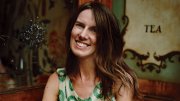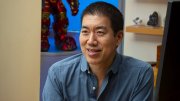The Radcliffe Institute's 2001-2002 fellows include a sculptor, a filmmaker, a painter, and two composers; a poet, a novelist, two playwrights, and a screenwriter; and three men (professors at Harvard, Columbia, and Catholic University). Scholars predominate in the fellowship ranks; their projects range from genomic studies of sea urchins to topics in physics, sociology, literary and cultural studies, and population policies in China.
A shorthand way of considering the fellows is to examine those affiliated with Harvard faculties and their fellowship projects: Bridie J. Andrews, assistant professor of the history of science (a history of acupuncture); Lizabeth Cohen, Jones professor of American studies (a history of mass-consumption culture); Judith Lewis Herman, clinical professor of psychiatry (how the survivors of violent crime come to terms with their transgressors); Wilt L. Idema, professor of Chinese literature (women's writing in imperial China); Pamela Kohl Keel, assistant professor of psychology (on the changing epidemiology of bulimia nervosa); and Elizabeth Warren, Gottlieb professor of law (a book on women, children, divorce, and bankruptcy). Mary Maples Dunn, a colonial American historian who served as the institute's acting dean from its formation until Drew Gilpin Faust's arrival, will also be a fellow.
For a complete list, and for information on the institute generally, consult www.radcliffe.edu.





